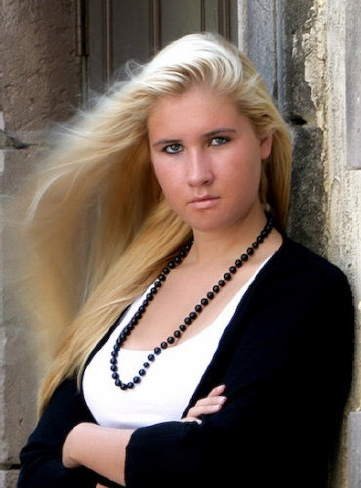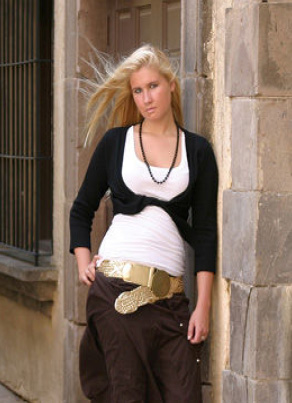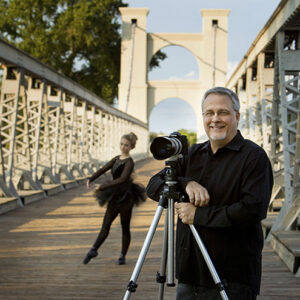 Controlling Motion
Controlling Motion
by Steve Kozak
M. Photog., CR.
CPP
The shutter speeds not only control the amount of light that reaches the film, but they also control the apparent movement of objects in motion during the exposure.
Objects that are moving during the exposure will appear almost stationary at fast shutter speeds, and may record as a blur during slower shutter speeds.
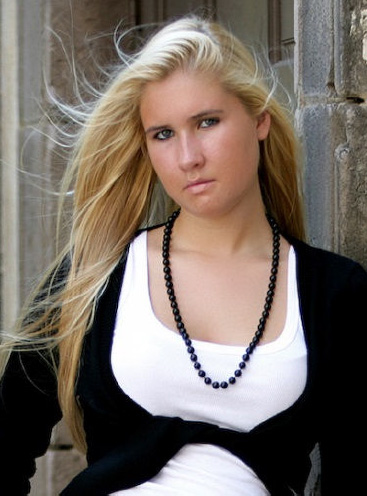 Fast Shutter Speed
Fast Shutter Speed
This image at left was recorded at F2.8 @ 1/250. Notice how the fast shutter speed arrested the movement of her hair blowing in the wind.
Slow Shutter Speed
This image at right was recorded at F16 @ 1/8 with the camera on a tripod. Notice how the slow shutter speed recorded the movement of her hair blowing in the wind.
By the way, shutter speeds help control movement of the camera by the photographer.
We all have a tendency to shake when we hold the camera. For a picture to be truly sharp, the camera needs to be kept very still during the exposure.
When hand-holding the camera, use shutter speeds that are no slower than the focal length of the lens you are using.
It is recommended that you use shutter speeds with a value that is at least 1/focal length – or faster when your hand-holding the camera.
For example, use 1/250 if you have a 200mm lens on the camera or 1/125 with a 100mm lens. Generally speaking, it is best not to allow the shutter speed to fall below 1/60 when hand-holding any lens.
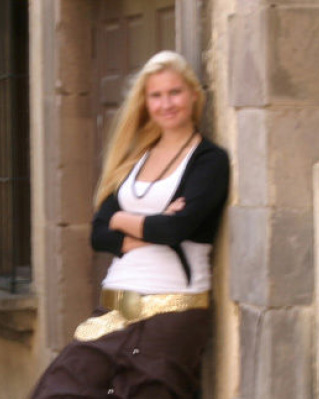 Slow Shutter Speed
Slow Shutter Speed
This image at left was recorded with a 100mm lens at F16 @ 1/8 with the camera hand-held.
Notice how the slow shutter speed recorded the movement the camera in my hands.
Fast Shutter Speed
This image at right was recorded with a 100mm lens at F4 @ 1/125 with the camera hand-held. Using a shutter speed that is at least equal to the focal length of the lens (100mm = 1/125) allows me to hand-hold the camera and record a sharp image.
Using speeds slower than the focal length of your lens may require a tripod, monopod or some other camera support. Vibration Reduction or Image Stabilization features on a lens will also help keep images sharp at slower speeds.


